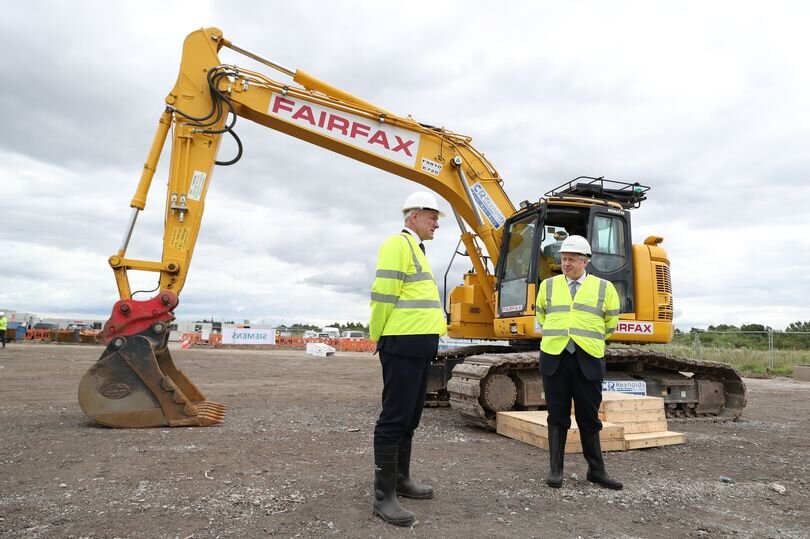The London Underground is coming to Yorkshire
Image: Viktor Forgacs, Unsplash
Ever been to Goole? Probably not. It’s a small East Yorkshire town known regionally for its historic inland port and …not a great deal else. Yet despite its low profile, Goole has recently attracted the attention of German industrial giant Siemens. They’ve chosen the town as the site for building the next generation of London Underground trains. The £200 million investment is not only a huge coup for the local area, it hints at an even bigger story about the changing face of the UK.
Levelling up?
Before Covid-19 dominated the headlines, there was much talk about the Government’s levelling up agenda, and the revitalisation of the former Labour strongholds of the North. Much of this commentary implied that large swaithes of Northern England were an economic wasteland. Yet, while there’s no doubt government investment is long overdue, Northern England is far from the grim economical monolith many in London view it as.
Northern cities have been in the ascendancy for two decades, explaining in part, why there’s an accelerating exodus from London . In 2018, IBM noted that Manchester and Liverpool were in the top ten cities in the world for inward foreign direct investment.
It’s true that many of the North’s towns have found it hard to recover from the decline of heavy industries. Yet others have been quietly rebuilding, and now there is a growing trend for unheralded Northern places to attract some of the world’s biggest engineering and technology companies.
With Boris’s blessing
Image: Peter Byrne/PA Wire
Hull’s redeveloped Marina area. Image: Jack Foster, Unsplash.
It’s Tuesday morning in mid-Summer and we’ve travelled to the site of the future Siemens factory at the business park at Junction 36 of the M62, less than two miles from the centre of Goole. The hum of the traffic is punctuated by heavyweight clanking, rattling and thumping. The groundwork for Siemen’s new factory has been started. In a neighbouring field, another huge facility is being developed, a 232,000 sq ft building for Chemicals giant Croda Europe. Two weeks before, Boris Johnson visited the Siemens site predicting it will become a ‘great European centre’ of train manufacturing.
According to their website, Siemen’s 67-acre site has an investment potential of £200m, with up to 700 skilled permanent jobs in engineering and manufacturing, and a further 1,500 in the regional supply chain. The company is also planning a £6 million rail industry innovation centre to focus on research and development.
Why Goole?
The town has had a prosperous inland port since the 1826, and the continued health of the port points to a strong local work ethic. Unlike many areas of the UK, Goole has plenty of space for commercial development, affordable housing and it’s only minutes away from the motorway.
Dig a little deeper under the surface, and the socio-economic statistics also paint a positive picture about Goole. Compared to the national average, Goole has higher levels of home ownership and education and lower numbers claiming benefits. However, one area that isn’t as healthy, is the town’s age demographic, with fewer young people 0-18 compared to national levels. Goole struggles to hold onto its young people, leaving the community with a population skewed towards older age groups and retirment. Yet this specific issue is one that investment from companies like Siemens will held address.
Tackling an age old problem
The hope for places like Goole is that the growth in high skilled jobs will help reverse the trend for ambitious graduates leaving their home towns behind for good and settling elsewhere – taking their energy and income with them.
In addition to homegrown talent, Goole can draw young, skilled and mobile workforce from places like Manchester and Leeds to the west and Hull to the East – all within a commutable distance along the M62.
Most promisingly, the growing network of Northern engineering businesses is creating a virtuous circle; ambitious engineers and managers can expect to grow their careers locally, switching between nearby employers without the need to uproot their lives and families.
Northern revival
Drive 30 minutes east and you come to Hull with its ‘energy estuary’, home to engineering giants as Ørsted and Siemens Gamesa. Shaking off decades of post-war decline, Hull is now a world-leading centre for wind power, servicing the industry globally and supplying turbine technology for the world’s biggest offshore wind farm 120km off the east coast.
And 30 miles south from Goole, is Doncaster – home of the legendary Flying Scotsman and Mallard locomotives. This is where Hitachi have recently invested £80 million in their rail facility. For young apprentices in South Yorkshire, a career in rail engineering is once again a realistic prospect.
This high tech cluster is a small but significant sign that the UK’s socio-economic landscape is shifting. Wealth and ideas are becoming less centralised, spreading and devolving, making the country more balanced and opportunities more equal.
In the North, politicians will try to claim the credit, but in places like Goole the evidence suggests that success is down to the local people; their self-sufficiency and ability to adapt and attract investment on their own merits.
Long may it continue.




